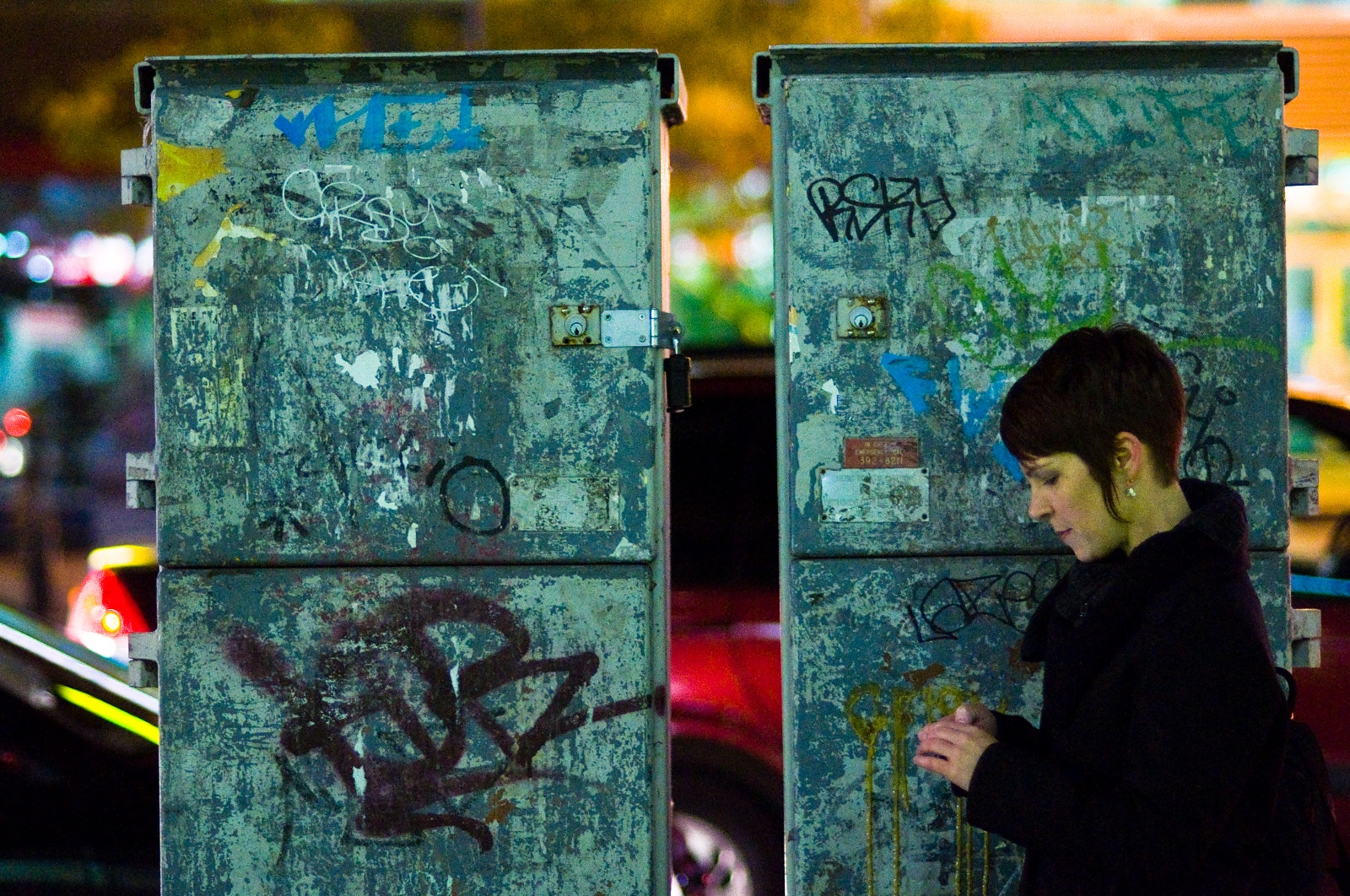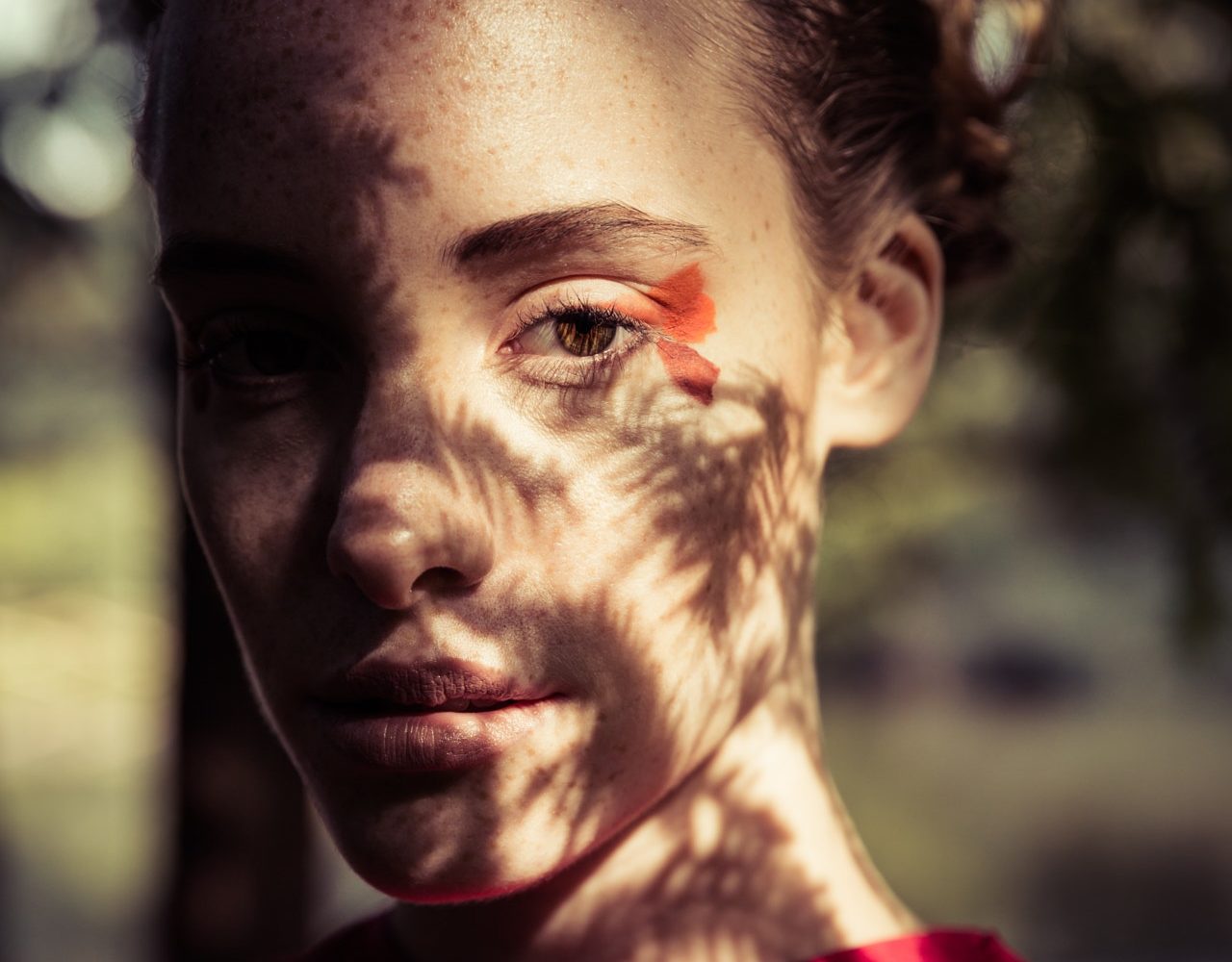Photo: Graffiti Texting by Zoë Gemelli
If you were anything like me growing up, you were the family documentarian. You took selfies before they were ever given that name. Maybe you joined the camera club at school or lurked in darkrooms of your favourite pseudo-uncles.
Long before I dared call myself a photographer, I messed around with whatever camera I could get my hands on. An old dusty Brownie, Polaroids, and numerous point-and-shoots all brought me closer to this beloved craft.
But, it was the keen eye of a friend of the family who steered me towards my first SLR, a Nikon FM, at age 15. That friend took me out and showed how to look for photos in everything I experience. He challenged me to walk around for hours exploring with my camera, getting to know what I liked to capture and the feel of the crank as I wound the film.
Fast forward 20 odd years later; digital was everywhere, and I was rocking a decent point-and-shoot. My pay grade finally allowed me to make the jump up to the ranks of semi-professionals and buy my first DSLR, a Canon 40D. Having done my research, I snagged a 50mm f/1.8—the nifty fifty, as it has been dubbed.
Call it a gateway drug, but that camera and lens showed me how to get better photos in a matter of a few shots. It made me want to learn more. I devoured books, magazines, and online tutorials. My goal was to be as good as the photos I loved and the photographers I idolized; to backwards-engineer those shots and push myself to be that great, too.
Along the way I learned a delicious secret: This adventure never stops.
1. Seeing in Photos
Before you set out to understand the difference between an f-stop and aperture (hint: they are the same thing), slow yourself down and take a walk. I’d tell you to not even bring a camera with you for this venture; just go looking for photos. What do you see? What colors, textures, and shadows catch your attention? What draws your eye to them? Where is the light? Be an observer in your own world and try to imagine that you had the knowledge and tools of a seasoned pro already. How would you want your photo to look?
This is no small task. You’ll be overwhelmed, scratching your head, wishing you knew the name for bokeh (hint: the beautifully shaped out of focus bits we tend to love). Take it all in. Breathe it in. Close your eyes. What does the photo of this scene look like in your mind’s eye? Sketch it out. Open your eyes.
You’ll be seeing in photographs as soon as you allow yourself to uncover how to access this magical place within you. Long before you lift a camera to your eye. Identifying what you want to photograph and how you want it to look will help you when you do know that an f-stop is aperture and what shallow depth of field means. This is the very beginning of your journey to seeing.
This is a view of Manhattan and Hoboken from Jersey City. This is how I saw it first, just as it presented itself to me.
This is the photo I had in my mind from the view in the above photo. It’s an HDR shot on a beautiful day.
Pushing myself further, I saw these Hoboken rowhouses and had an idea. Tilt-shift lenses and style was all the rage at that moment. I ran this one through some software to get that effect.
2. Find the Photos You Love
When you’re back from your walk, you’ll be eager to grab your camera and head right back out. Stop for a moment. Think about what you discovered out in the world. Take those scenes from your mind’s eye and try to find photos that match what you want to be able to do, how you want to photograph. What makes them stand out for you? Print them out. Pin them to a wall. Get to know them. What part do you look at first? Where does your eye lead you?
Grab a marker and make notes. “How do I do this?” with an arrow pointing to movement. “What’s it called?” when the background is out of focus. “Why is this off-center?” when the focal point is a bit to the left or right.
What you’re doing here is investigating what you like about photography and creating a roadmap to what you want to shoot. Everything you see in those photos you can and will be able to do yourself. Knowledge is everywhere. Just like pictures are everywhere.
This photo represents exactly the kind of scene we all walk past every day and don’t really pay attention to. A newsstand, bookseller, the cacophony of clutter. It’s a perfect example of a scene you can contemplate long before you capture the photograph.
A day in the life of a commuter. These scenes happen every single day, everywhere in the world. In your world, even if you are rural, movement is happening, stop lights are flickering, fog is slowly dissipating. Watch how the light moves and unfolds. Think about where you want to position yourself if you have a camera in hand. Take the shot.
Being patient pays off. Henri Cartier-Bresson made an entire career out of his patience. Waiting for a shot to unfold on a scene like this pushes you to understand cadence and timing. Someone might have only seen rainy sidewalks with leaves. But by watching it unfold, the shadows tell big stories and uncover beautiful spontaneity.
3. Take Your Camera Everywhere
“The best camera is the one you have with you.” The most important thing in photography is actually taking the shot. You have to be there, in that split second, with a tool in your hand to capture it. What the tool is doesn’t matter as long as it works, so I give you permission to stop worrying about what gear you have. Take whatever camera you can with you and become a documentarian in your own world. That means your smartphone, your iPad or your DSLR, whatever works. If you don’t have the tool with you, you’ve missed the shot.
It’s almost impossible to leave the house without a camera these days due to the proliferation of smartphones. Be one of those people. Take pictures when you take the dog for a walk, commute to work, cook dinner, or see friends. Look for photos in places you wouldn’t have felt you could have taken pictures in before, like the washroom or the dentist’s chair.
Pushing yourself to find photos in the mundane, the ordinary, and the banal is exactly the way you will find your path to the next level. It’s how you will find your eye, your voice, and your bravado. It’s the gateway towards this great adventure called photography.
Taken on a photowalk, with a manual Nikon 105mm f/2.5 lens on my DSLR, this is a sight many people walk by everyday without noticing. Three iconic buildings in downtown Toronto. They are all about a mile apart. But, not according to the optics I chose for this shot. I saw how they were juxtaposed and selected the right lens to capture them looking like they were all within a block of each other.
Just another street corner in Manhattan. Or was it? I had probably walked by a 100 of these racks over the years. It wasn’t until I had a camera in hand on the right day that I saw magic in the colours and patterns.
Taken at Toronto’s Nuit Blanche in 2010, I was waiting for my friend who was texting other people that we were supposed to meet up with. This wasn’t the art we were going to experience, but I saw this scene unfold and had to capture it.
Zoë Gemelli is equal parts photographer and writer. Wanderlust as her guide, she has lived in Boston, New York, and Toronto. This is her first contribution to ISO. Are you craving more helpful advice to get you inspired? Then, read one of our most popular ISO posts: “7 Underrated Pieces of Advice for Photography Beginners” and share your own advice in the comments section below.
















Leave a reply